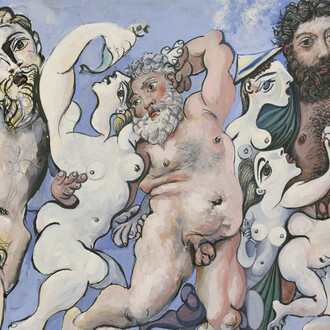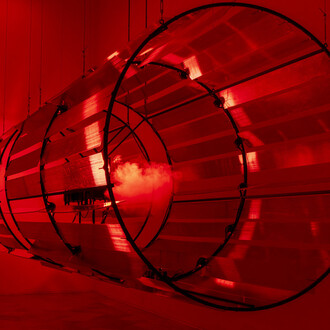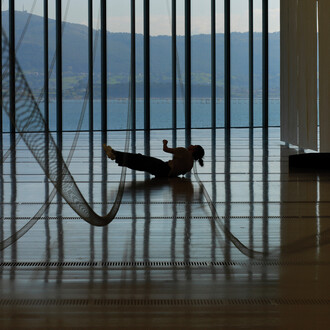The passage of time entails a gradual loss of the senses and a shift in how we perceive our surroundings, even the most familiar ones. The decline of sight and hearing is the most noticeable, while smell, taste and touch tend to diminish very little in adulthood. These senses allow us to perceive and understand the world around us, providing information from virtually the earliest hours of life. They are therefore intrinsically linked to memory, as they are part of one’s own growth and individual development.
The exhibition What still blooms by the French-Spanish artist Françoise Vanneraud (Nantes, France, 1984) takes as its point of departure a deeply meaningful biographical experience: the imminent sale of her childhood home, and with it, the garden that for years served as the geographical and emotional axis of her life. The changing colours and light with the seasons, the birdsong or the crunch of dry leaves underfoot, the smell of damp earth or the chill that seeps into the bones—these are sensations shared over the years, interwoven with personal memories.
Far from seeking to document a loss, Françoise Vanneraud offers a symbolic reconfiguration of it, transforming uprooting into an artistic gesture and memory into a tangible space. The gallery thus becomes a deconstructed garden, a free composition that does not aim to faithfully reproduce a specific space, but to evoke a sensory impression associated with the emotional memory of childhood and the persistence of an intimate bond with the natural world.
The exhibition is structured around a series of textiles hand-dyed with plants and roots from the artist’s own family garden (beetroot, mimosa, roses, madder, loquat, onion skins…), whose colours have emerged in the process according to their own rhythms and intensities. The fabrics have then been cut into petal, leaf and plant-like shapes and assembled into collages without predefined patterns.
The large-format textile series entitled Suspended garden unfolds through the space like tapestries or backdrops, but in mutable and organic arrangements that resist remaining fixed to the wall. Like memories, these works fold and twist, precariously leaning on one another, some hidden behind others, only revealed when another layer is moved aside. Their folds break the flatness of the two-dimensional surface and lend a sculptural character, allowing light and shadow to play across them, highlighting the varied textures (some works include vintage domestic sheets with embroidery), and even revealing the reverse side of the pieces.
Elsewhere, the three works that make up the series Botanical memories, also made from textiles dyed with organic materials and pigments, have been cut to give them a biomorphic appearance, as if they were enormous leaves blown by the wind. In contrast to these wall-based pieces, a series of small clay sculptures also appear—once again resembling dried, twisted and abstract leaves.
In the room, there are also slender sculptural columns made from clay collected along the banks of the Loire river, near the artist’s childhood home. Hanging from ceiling to floor, these mobiles are composed of stacked ceramic pieces that resemble petals, leaves and seeds. Depending on the type of clay and firing time, the column elements vary in hue from white to grey, ochre, pink or deep red. These suspended botanical elements appear as fragile as garden flowers, but the solidity of fired earth is revealed in the clinking sound the pieces make when moved by the wind or by hand.
Finally, a series of black-and-white photographic collages generate beautiful floral monsters—vegetal Frankensteins—strange yet striking in their forced unions and seams.
Taken as a whole, What still blooms invites the visitor to enjoy a hidden, poetic and fantastical garden within a gallery space. The viewer is led to discover a nature that is beautiful, yet unstable and ever-changing, and in doing so, to reconnect with their own memories. This contrast establishes a dialectic between the ephemeral and the enduring, the personal and the collective, the symbolic and the material. What still blooms thus becomes a symbolic territory in resistance—one that insists on remaining alive and on being continuously reinvented.
(Text by Javier Martín-Jiménez)












![Saul Steinberg, The museum [El museo] (detalle), 1972. Cortesía del Museo de Arte Abstracto Español](http://media.meer.com/attachments/dfbad16c22c5940b5ce7463468ac8879f3b4bf23/store/fill/330/330/042ecf3bcd2c9b4db7ddbc57cb32e950c095835f7b5cd55b6e1576a6e78c/Saul-Steinberg-The-museum-El-museo-detalle-1972-Cortesia-del-Museo-de-Arte-Abstracto-Espanol.jpg)


